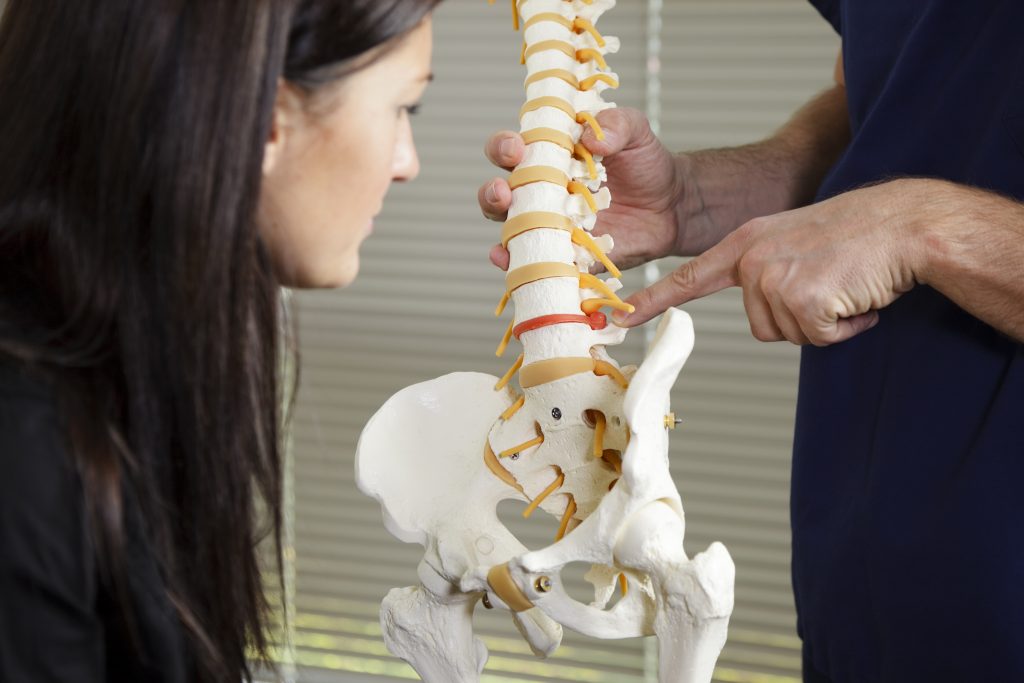
The decision to adopt a particular technique in chiropractic practice may be based on many factors.
The decision to adopt a particular technique in chiropractic practice may be based on many factors. Personal philosophy, patient demographics, trial and error, physical strain on the practitioner, equipment and training required, and current standards of practice, which are evidence based and supported by research, may play a part in making this decision. All of these factors contributed to my opting to become fully certified in Cox Technic several years ago, and to reinvigorate my practice and my purpose for choosing the profession of chiropractic as my career. It was the best choice I have made in 30 years of practice.
WHAT IS COX TECHNIC?
Cox Technic is a hands-on spinal manipulation method for spinal pain, be it sprains or strains or radiculopathy, sciatica or spinal stenosis due to disc herniation or spinal cysts. That seems like a wide-reaching capability for one technique, but Cox Technic is gentle enough, and effective enough, for chiropractors to confidently follow its evidence-based protocols in order to help out patients with a variety of presentations. Pregnant patients with back and leg pain, post-surgical continued pain patients, neck pain and arm pain patients, back pain and even bilateral leg pain patients find relief with this form of treatment. The relief can be 50 per cent or 80 per cent, even 100 per cent for some – but most patients are quite appreciative of any relief they receive after years of frustration and pain and/or even facing a surgery they may not want.
HOW DOES IT WORK?
The Cox Technic system of spinal pain management is guided by documented algorithms (called protocols) of decision-making to determine the treatment of a patient. Protocol I and Protocol II are specific for patients with pain below the knee and pain that doesn’t extend below the knee, respectively. Depending on symptoms, patients may be treated daily to 50 per cent relief, which for many comes in a visit or two. The 50% Rule will guide this determination. As the patient reports 50 per cent relief of pain and the doctor notes objectively a 50 per cent relief of pain, patient visits are reduced by 50 per cent. Having these research-based guidelines to share with patients and follow as physicians is a comfort.
AN EVIDENCE-BASED TECHNIQUE
Since the U.S. government began funding chiropractic research in the 1990s, projects involving Cox Technic (flexion-distraction) have received funds each granting year. These projects have been biomechanical investigations as well as clinical comparison trials involving medical and chiropractic researchers and clinicians.
Focus has been on building the evidence-based approach to care of spine-related pain, be it pre-surgical or post-surgical; cervical, thoracic, or lumbar; or extremity or spinal nerve related. Recently the research progress with respect to the Cox Technic care of the cervical spine, the failed back surgical patient and the pelvic pain patient has really been the strongest. I would like to describe some examples of this work.
The cervical spine research being carried out at Loyola University’s Stritch School of Medicine and the Hines VA Hospital in Chicago, in conjunction with researchers from Palmer Research Center, focuses on the biomechanical effects of the Cox Technic with its data currently under analysis in preparation for publication. A clinical outcomes study is underway at Palmer Research Center that tracks patient response to Cox Technic.
The failed back surgical syndrome patient (a.k.a FBSS or post-surgical continued pain) is also a focus of research. This patient has already had a surgery but continues to suffer. Cox Technic has much to offer and currently a data collection study that just finished its documentation stage is under analysis. Twenty-two practising chiropractors were asked by Dr. Cox to participate in this study following very strict selection and treatment protocols.
Then, there is the pelvic pain patient. This type of case is emerging as an exciting opportunity for clinical research, and is so rewarding to treat. In the nicely written book, Pelvic Pain and Organic Dysfunction, Dr. James Browning, a certified Cox Technic doctor in Michigan, calls on documented research and patient cases to outline specific protocols to care for these patients. These cases go beyond back pain management to issues of pelvic organ dysfunction and in some cases have yielded amazing results.
Cox Technic doctors and researchers continue to document the outcomes and the protocols required to get results. Documentation is central to Cox Technic from patient tracking to publishing. Dr. James Cox, developer of the Cox Technic, states that the clinical examination is central to positive clinical outcomes. In his recent webinar, Dr. Cox emphasizes that the chiropractor should do every test on every patient every time so that the examination process is thorough each time. He has also co-ordinated the efforts of several authors and updated the content in his new seventh edition textbook, Low Back Pain: Mechanism, Diagnosis, Treatment, published by Lippincott Williams & Wilkins (November 2011). The book emphasizes the need for documentation and compiles clinical outcomes.
HARNESSING CLINICAL OUTCOMES
Clinical outcomes are central to the chiropractic practice. Online and off, published clinical outcomes boast clinical relief for spine pain patients. Online case reports are published each month on the www.coxtechnic.com website. The 114th case study was published in December 2012. (You can sign up for a free newsletter from them at the same website address.)
Offline, peer-reviewed journal articles revealing clinical case successes using Cox Technic are plentiful as well. One retrospective study of 39 cervical spine patients reveals 13 visits to attain relief.1 Another retrospective study involving 32 failed back surgery patients reports no adverse side-effects from the chiropractic Cox Technic treatment plus a 4.1 Numeric Pain Scale (NPS) – this scale ranges from 0, where there is no pain, to 10, which describes the worst pain imaginable – drop overall and 5.7 NPS drop in patients with combined surgical approaches.2
Case reports describing clinical outcomes with Cox Technic can also be found in peer-reviewed journals. A case report of synovial cyst pain for three years noted that the patient experienced 80 per cent relief in 16 visits over three months.3 In another case report, a patient suffering with testicular pain for five years reports 100 per cent relief at first visit with leg pain gone at four weeks.4 Continuing in this vein, a post-surgical fusion patient who suffered for three years with adjacent segment disease after an aviation accident found relief that allowed him to return to work eight or nine hours a day after four weeks of treatment5 while another post-surgical patient found relief after 13 visits.6 Cervical spine case reports include a patient suffering from foraminal stenosis with radiculopathy from a cervical disc herniation who found relief after 15 visits in 10 weeks7 and a patient with a cervical disc herniation and foraminal narrowing who reported relief after 10 visits over four weeks.8 In another report, a pregnant patient with back pain and radiculopathy found relief of her sciatica in one visit and total relief in eight.9
With respect to safety, a study of technique application and reception found that zero patients were hurt in any way and only one doctor (two per cent) was hurt while performing Cox Technic. In contrast, other techniques had higher incidences of injury to patients and doctors; examples of these were diversified (26 per cent patients/22 per cent doctors); Thompson (18 per cent patients/two per cent doctors) and Gonstead (29 per cent patients/23 per cent doctors).10
Last, but not least, is the work that can be found on clinical outcomes in spinal stenosis with the use of the Cox Technic. Today’s baby-boomer population is bringing its spinal stenosis and its degeneration to our doorsteps. We are ready for them, pre- or post-surgery, neck- or back-related, with related pelvic pain issues or not. Cox Distraction Manipulation in the treatment of lumbar spinal stenosis patients is shown to improve symptoms by 76 per cent and disability by 73 per cent.11
TRAINING AND CONTINUING SUPPORT
The system of Cox Technic enhances our approach to the examination, diagnosis and treatment of spine pain.
Educational opportunities for learning this system abound and are delivered as onsite seminars, in-office workshops, online courses and webinars. In-office workshops give doctors an opportunity to experience the Cox Adjusting Instrument, to feel the effects of the treatment, to learn the basics of the treatment protocols and to see some of the educational resources available. These workshops will be the first step to motivate doctors to consider becoming certified in Cox Technic and to move our profession forward with evidence-based standards of care for the benefit of our patients. You can find more information at www.coxtechnic.com .
As well as training in this technique, marketing support continues to grow with the “Cox Technic Complete” program. Biomechanical effects continue to be documented and clinical outcomes continue to relieve patient suffering and appear in the literature.
As Dr. Cox notes, “Cox Technic recognizes the future of spinal manipulation will focus on documented evidence-based clinical outcomes. Research leads the way by demonstrating the biomechanical changes in the spine when chiropractic manipulation is administered. This is followed by practitioner skill in its application, which results in superior clinical outcome for the patient. This is the long-term goal of Cox Technic in leading our profession to its deserved recognition in the healing arts.”
(The author would like to thank Julie Cox-Cid for her contributions to this article.)
REFERENCES
1. Schliesser JS, Kruse RA, Fleming Fallon L: Cervical radiculopathy treated with chiropractic flexion distraction manipulation: a retrospective study in a private practice setting: Journal of Manipulative and Physiological Therapeutics 2003; 26(9):592-596
2. Kruse R, Cambron J: Chiropractic Management of Postsurgical Lumbar Spine Pain: A Retrospective Study of 32 Cases. J of Manipulative and Physiological Therapeutics 2011; 34(6):408-412
3. Cox JM: Chiropractic management of a patient with lumbar spine pain due to a synovial cyst: a case report. J of Chiropractic Medicine 2012; 11(1):7-15
4. Rowell RM, Rylander SJ. Low-Back Pain, Leg Pain, and Chronic Idiopathic Testicular Pain Treated with Chiropractic Care. J Altern Complement Med 2012 Apr 10. [Epub ahead of print]
5. Greenwood D: Improvement in chronic low back pain in an aviation crash survivor with adjacent segment disease following flexion distraction therapy: a case study. J of Chiro Med 2012; 11(4):300-305
6. Kruse R, Cambron J: Cox decompression chiropractic manipulation of a patient with postsurgical lumbar fusion: a case report. J of Chiro Med 2011; 10(4):255-260
7. Gudavalli S, Kruse R: Foraminal stenosis with radiculopathy from a cervical disc herniation in a 33-year-old man treated with flexion-distraction decompression manipulation. J of Manipulative and Physiological Therapeutics 2008; 31(5):376-380
8. Manison A: Chiropractic management using Cox cervical flexion-distraction Technic for a disk herniation with left foraminal narrowing in a 64-year-old man. J of Chiro Med 2011; 10(4):316-321
9. Kruse R, Gudavalli S, Cambron J: Chiropractic treatment of a pregnant patient with lumbar radiculopathy. J of Chiro Med 2007; 6(4):153-158
10. Ndetan H, Rupert R, Bae S, Singh, K: Prevalence of musculoskeletal injuries sustained by students while attending a chiropractic college. J of Manipulative and Physiological Therapeutics 2009;32(2):140-48
11. Murphy DR, Hurwitz EL, Gregory AA, Clary R. A non-surgical approach to the management of lumbar spinal stenosis: A prospective observational cohort study. BMC Musculoskeletal Disorders 2006; 7:NIL1-NIL8.
 |
|
Dr. Dean Greenwood is a co-owner of the Vancouver Spine Care Centre in Vancouver, B.C., a 1981 graduate of the Palmer College of Chiropractic, a Fellow of the Academy of Chiropractic Orthopedists (U.S.) and of the Canadian College of Chiropractic Orthopedists, and a graduate of the Master of Science in Advanced Clinical Practice program at National University of Health Sciences.
Print this page
 Photo: GETTY Images
Photo: GETTY Images